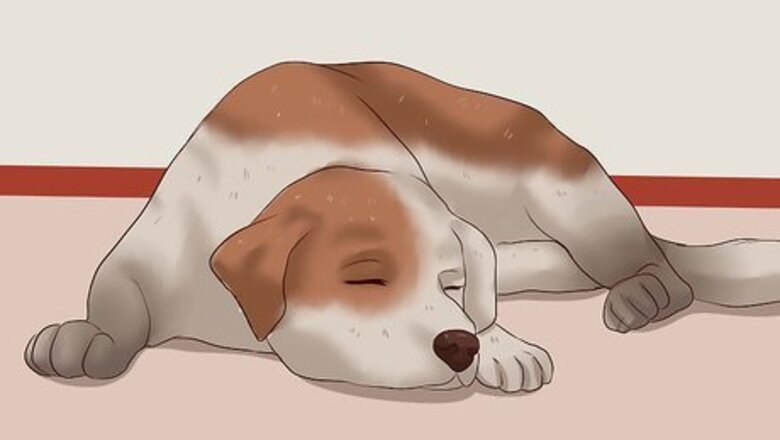
views
Getting Your Dog Used to Handling
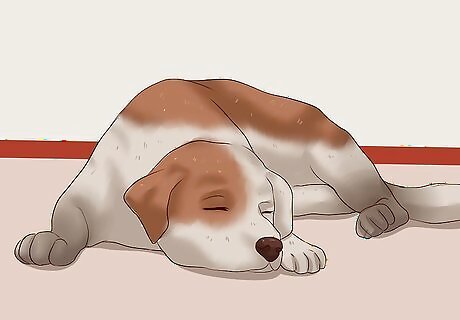
Choose the right time. Most dogs do not like nail trims, so it's important to choose a time when your dog is relaxing. If he's in the mood to play, wait until he's lounging before approaching him for paw-handling training.

Ease into paw handling. Start by touching your dog's paws gently. If he doesn’t pull away or resist, start massaging the paw and gently pressing on his nails. Depending on your dog’s age and temperament, it may take a few sessions before he's used to paw handling. Repeat this exercise a few times daily until your dog stops reacting to paw handling.
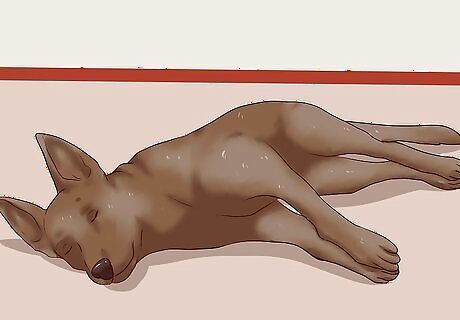
Teach your dog to lie on his side during trims if necessary. If your dog's had a bad experience in the past, he may resist nail trims. For example, if someone accidentally cut the "quick" (an area of the nail with a rich blood and nerve supply), he would have experienced pain and bleeding. Older dogs may have arthritis in their toes, and nail trimming may be uncomfortable. For dogs like this, it can be helpful to have them lie down while you carefully handle their nails. Have them lie on their side while you do your paw-handling training exercises. Another way is to trim the nails while the dog is standing without lifting up the paw. Only do this if you are experienced with trimming nails.
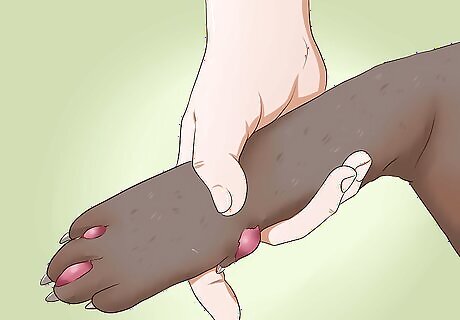
Inspect the paws for abnormalities. As you are massaging the paws and nails, take the opportunity to examine their health. Bring any pain, sore or raw spots, nail breakage, swelling or redness, lameness, or odd nail color to the attention of your veterinarian before you attempt to trim the nails.Trauma, infections, tumors, and immune diseases are the most common nail disorders in dogs. Trauma usually only occurs in one nail and is caused by running on rough surfaces, catching a nail on an object, or improper nail trimming. Trauma or health conditions like diabetes and low thyroid levels can lead to bacterial infection in the nail. Bacterial infections usually cause swelling, pain, and discharge around the nails. Fungal and parasitic infections are less common than bacterial infections but cause similar symptoms. Tumors can take different forms: lumps, bumps, swellings, redness, or discharge. Immune disease can also affect the nail and may make the nail brittle and prone to sloughing. Always bring these findings to the attention of your veterinarian as soon as possible for treatment.
Trimming the Nails
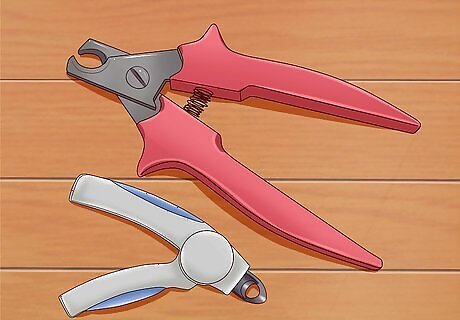
Use clippers made specifically for dogs. Human clippers are designed for a flat surface area, but dog nails are cupped. Using human clippers can squish the nail, causing pain or injury. There are a few different types of dog nail trimmers, the most common being either the guillotine (U shaped) or the scissors type. Which type to use is generally a matter of preference for the user. The "scissors" might be easier to use, as you don't need to thread the nail through the cutting surface as with the guillotine.
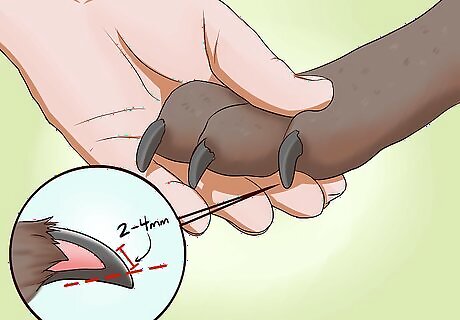
Locate the quick. The quick is the part of the nail rich in blood supply and nerves. Cutting into it can be quite painful for the dog, and cause bleeding. Ideally, you should trim the nail back to within 2-4 millimeters of the quick. If your dog has white nails, you should be able to see the pink-colored quick through the nail. If your dog has dark nails you won't be able to see the quick. Carefully trim the nails back a little at a time to avoid cutting into it. You might have a groomer or vet show you how far to trim the nails. If a dog’s nails grow too long, the quick will grow with it. Frequent trimmings will make the quick recede back to a normal length.

Secure the dog. If the dog's relaxed and used to having its paws and nails handled, just have your dog lie down for its nail trimming. If he gets antsy, restrain him gently in the lying position using the elbow and arm that's holding his paw. If you have a very wriggly dog, ask a second person to help you out. Have your friend hold the dog while you're free to focus on the trimming.
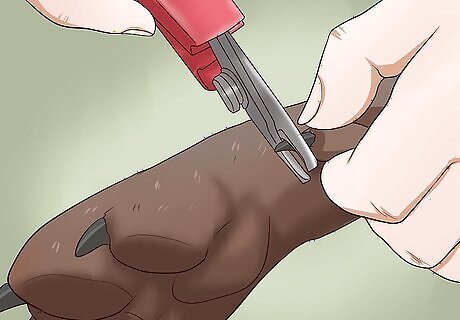
Start with the back paws. The nails on the back paws are usually shorter and easier to trim. Dogs also tend to be a bit calmer about having their back paws manipulated than their front paws, so start there, then move on to the front paws. Locate or approximate the quick before trimming off the end of the nail. Carefully work your way back towards the quick and stop trimming 2-3 millimeters in front of it. Don’t forget to trim the dewclaws on dogs that have them. Dewclaws are the nails some dogs have on the inside of the leg, just above the "wrist."
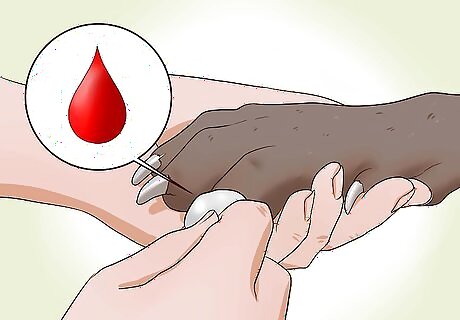
Stop any bleeding if you cut into the quick. A cut quick usually bleeds a lot, and your dog may cry out in pain or nip at you if this happens. If you accidentally cause bleeding, hold a piece of tissue onto the nail for a few minutes. If that doesn't stop bleeding, apply cornstarch or a commercial stop-bleeding powder or pen. Either dip the nail into the powder or apply a large amount using your fingertip. If bleeding doesn’t stop after 10 minutes, call your vet.
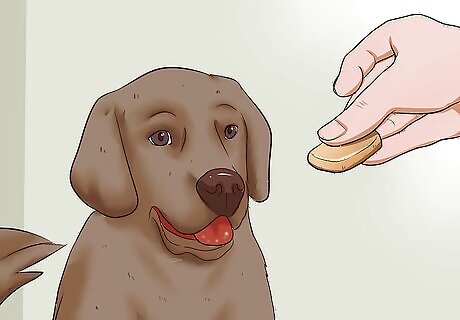
Praise your dog frequently. A lot of praise, and if you wish, a little treat, is a great incentive to stand still. Praise throughout the process, and give a treat after you finish working on each paw.
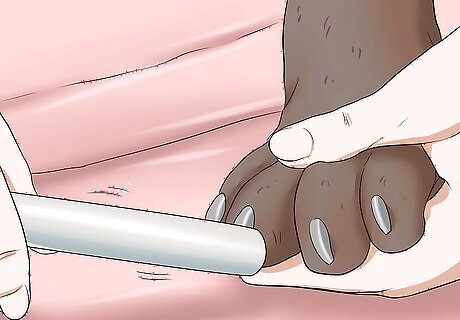
File the nails if desired. Just like human nails, dog nails can be rough and abrasive when they're freshly cut. They will wear down on their own with time. But, if you're worried about your floors or furniture, you can choose to file the nails immediately to round them off.




















Comments
0 comment